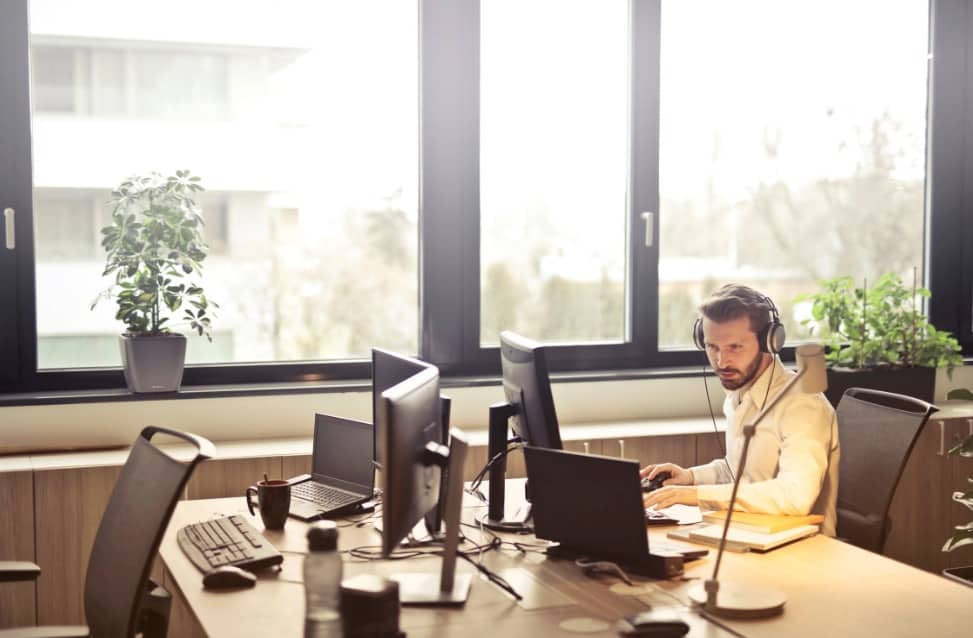Architecture and design undisputedly affect human behaviour. This was heavily researched and evidenced in “The impact of the ‘open’ workspace on human collaboration by Bernstein and Turban.
The underlying problem seems that even with the best intentions, an open plan office designed to improve collaboration and colleague connection is actually causing damage to the detriment of workers’ comfort levels. In one study, employees working within an open plan office had 73% less face to face communication, instead opting to interact electronically – email traffic actually increased by 67%.

From a business perspective, it may look like open plan offices create a sense of community, company identity and reduce silos between teams. The research begs to differ. In one particular study the evidence confirmed that open plan offices negatively affect workers: “Our systematic review found that, compared with individual offices, shared or open-plan office space is not beneficial to employee’s health, with consistent findings of deleterious effects on staff health, wellbeing and productivity.”
So why is it that when humans are grouped together at work in an open environment, it has a negative effect on the ability to interact with one another? There are many theories that hark back to the days of the caveman. Humans have always sought shelter; a form of protective roofing or surrounding walls make us feel safe knowing we’re protected from up above and at our sides. This vulnerability is innate within us, so when we feel exposed within an open plan office it physically and mentally unsettles us.

The open plan office will pose more of a threat to introverts who make up 30-50% of the workforce, according to Steelcase. Extroverts, the confident and assertive personalities who are comfortable being the centre of attention, are more likely to benefit from an open plan office. An introverted worker is likely to find the overwhelming stimulus exhausting, to the detriment of their comfort, productivity and engagement within the workplace. Susan Cain, author of “Quiet: The Power of Introverts in a World That Can’t Stop Talking” says, “When introverts act like extroverts, it’s very stressful. It’s not their natural behaviour. It takes a lot of effort and results in them having less mental and physical stamina available to do their work.”
A fear inherent to all of us, is the fear of looking or sounding foolish. With the reduction in physical barriers, employees can begin to feel constantly observed. Their personal conversations – to a colleague close by or on the telephone – will seem amplified, making the speaker uncomfortable whilst simultaneously distracting those around them. Lack of privacy can prevent employees from focusing on their work which leads to frustration and stress.

The physical aspect of an open plan office can heavily influence workers’ comfort levels; the often fought over heating thermostat or air conditioning remote is more likely to disrupt the balance, whereas flexible dividers or meeting booths are easier to position to prevent air flow.
The popular school of thought amongst workplace anthropologists indicates that companies should speak to its employees and find out what the main sources of frustration are. We know that HR and office design are influencing the workspace, so consult with the individuals using the space on a daily basis. After this discussion, if an open plan office is still the preferred option then it’s worth considering ways to provide distinct areas that provide quiet focus zones, casual breakout spaces and private seating areas that are physically unable to be seen by the rest of the office. Comfortable workers are both happier and more productive, so it makes sense to provide workspaces that cater to the rich and varied personalities working within them.
Pop in to the Workagile London showroom on 16-26 Banner Street, Clerkenwell or call Selvi Thind, showroom manager to arrange a visit on 020 3904 6688.
